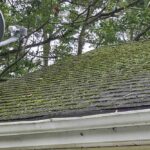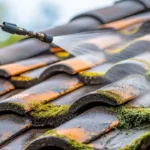Every homeowner knows that maintaining a house is a never-ending task. One of the most overlooked areas is the gutter system, specifically the downspouts. Properly functioning downspouts are crucial as they direct rainwater away from your home, preventing potential water damage. In this guide, we’ll explore essential DIY tips for downspout repair to help you keep your home safe and sound.

Importance of Downspouts
Downspouts play a vital role in your home’s drainage system. They channel rainwater from the roof to the ground, away from your house’s foundation. Without them, water can accumulate around the base of your home, leading to foundation damage, basement flooding, and erosion. Therefore, keeping your downspouts in good repair is essential for maintaining the integrity of your home.
Common Downspout Issues
Before diving into the DIY tips for downspout repair, it’s important to understand the common issues you might encounter:
Blockages
Leaves, twigs, and debris can clog your downspouts, causing water to overflow and potentially damaging your home’s exterior. Regular cleaning is crucial to prevent blockages.
Leaking Joints
Joints can sometimes leak due to wear and tear or improper installation. These leaks can cause water to seep into areas it shouldn’t, leading to damage over time.
Improper Pitch
If your downspouts are not pitched correctly, water can pool at the bottom instead of flowing away from the house. This can cause water to back up and overflow.
Tools and Materials Needed for Repairs
Before you start any repair work, gather the necessary tools and materials. Here’s a list of what you’ll need:
- Ladder
- Gloves
- Hose
- Plumber’s snake
- Sealant or caulk
- Pipe brackets
Step-by-Step Guide to Downspout Repair
1. Inspect Your Downspouts
Begin by inspecting your downspouts for any visible damage or blockages. Use a ladder to safely reach high areas and wear gloves to protect your hands.
2. Clear Blockages
Use a hose to flush out any debris from the downspouts. If the blockage is stubborn, a plumber’s snake can be used to dislodge it.
3. Repair Leaks
Identify any leaks at the joints and apply sealant or caulk to seal them. Ensure the area is dry before application for the best results.
4. Adjust the Pitch
Check the pitch of your downspouts to ensure water flows away from your home. Adjust the brackets if needed to correct the pitch.
Preventative Maintenance Tips
Regular maintenance can prevent many common downspout issues. Here are some tips:
Regular Cleaning
Clean your gutters and downspouts at least twice a year, or more often if you have overhanging trees.
Install Gutter Guards
Consider installing gutter guards to reduce the amount of debris that enters your gutters and downspouts.
Check for Wear and Tear
Periodically inspect your downspouts for signs of wear and tear, especially after severe weather.
When to Call a Professional
While many downspout repairs can be done on your own, there are times when it’s best to call a professional. If you’re uncomfortable working at heights, or if the damage is extensive, hiring a professional can ensure the job is done safely and correctly.
Conclusion
Maintaining your downspouts is a crucial aspect of home maintenance. By following these DIY tips for downspout repair, you can protect your home from water damage and prolong the lifespan of your gutter system. For more detailed guidance, you can visit this resource on roofing maintenance tips.

FAQs
How often should I clean my downspouts?
It’s recommended to clean your downspouts at least twice a year, in the spring and fall, to prevent blockages and ensure proper water flow.
What should I do if my downspout is leaking?
If your downspout is leaking, first check for any visible cracks or joint separations. Apply a waterproof sealant or caulk to seal any leaks.
Can I repair downspouts myself, or do I need a professional?
Many downspout repairs can be done as a DIY project. However, if the damage is extensive or you’re uncomfortable working on ladders, it’s best to hire a professional.
This article contains affiliate links. We may earn a commission at no extra cost to you.








